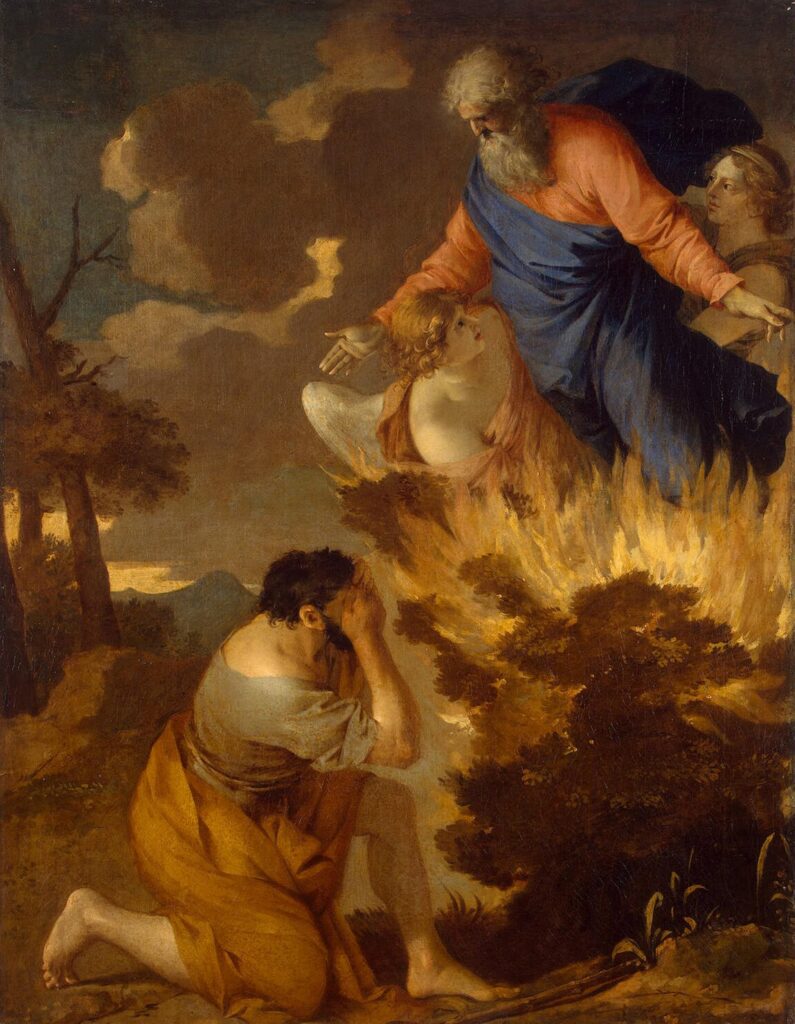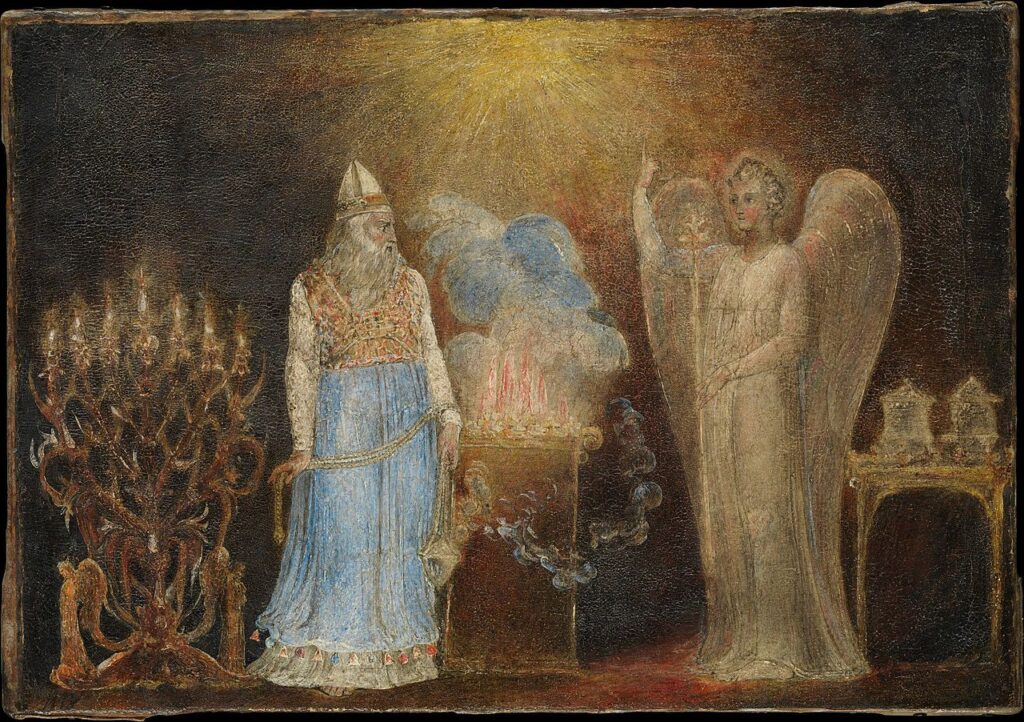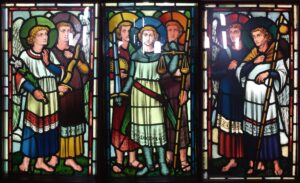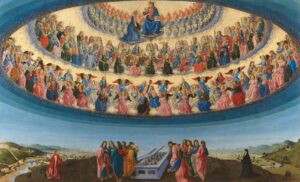Featured image: Hagar and the angel in the desert, Giovanni Lanfranco, Public domain, via Wikimedia Commons.
Key Takeaways
- The Angel of the Lord defies simple classification. It operates as both a messenger and a manifestation of God, blurring the lines between divine and intermediary.
- Its biblical appearances are pivotal. The Angel guides, protects, judges, and reveals God’s will during critical moments in the Old Testament.
- Interpretations vary across traditions. Jewish, Christian, and Islamic views differ, with Christians often identifying the Angel as a pre-incarnate Christ.
- Symbolism enriches its role. Fire, light, and the sword highlight the Angel’s connection to divine power, judgment, and mercy.
- The Angel bridges transcendence and immanence. It makes God’s presence tangible while preserving his otherness.
- Modern scholarship and culture keep the mystery alive. Scholars, artists, and popular media reinterpret the Angel, demonstrating its enduring theological and cultural relevance.
The Angel of the Lord is one of the most mysterious and fascinating figures in biblical mythology, standing at the intersection of divine revelation, human experience, and theological complexity. Unlike other angels, who are primarily seen as messengers or servants of God, the Angel of the Lord often speaks and acts as though it is God Himself. This blurring of identity has led to centuries of theological debate: Is the Angel of the Lord a unique heavenly being, a manifestation of God, or a prefiguration of Christ?
The Angel of the Lord appears at pivotal moments in the Bible, evoking awe, fear, and divine authority. This article explores the Angel’s identity, its appearances in scripture, and its evolving interpretations across religious and cultural contexts.
Table of Contents
The Angel of the Lord in the Bible
The Angel of the Lord features prominently in biblical narratives, often appearing as a mediator between God and humanity. Unlike other angelic figures, this Angel frequently speaks in the first person as God, performs actions attributed to God, and is worshipped or feared as divine.
Definition of the Term
In Hebrew, the Angel of the Lord is referred to as Malakh YHWH—malakh meaning “messenger.” While the word can describe human or angelic messengers, the addition of YHWH (the sacred name of God) indicates a unique relationship with the divine. This distinction has fueled centuries of debate about whether the Angel of the Lord is a separate being or a manifestation of God’s presence.
Key Biblical Appearances
The Angel of the Lord appears during critical moments in biblical history, often acting as a guide, protector, or enforcer of divine will. Some of its most notable appearances include:
- Genesis 16: Hagar and the Wilderness
In one of its earliest appearances, the Angel finds Hagar fleeing from Sarah’s mistreatment. The Angel speaks with divine authority, promising that her son, Ishmael, will become the father of a great nation. Hagar responds by naming God as “the One who sees me” (Genesis 16:13), suggesting that she equates the Angel with God Himself. - Exodus 3: The Burning Bush
In one of the most famous theophanies, Moses encounters the Angel of the Lord in the flames of a burning bush. As the story unfolds, it becomes clear that the Angel is synonymous with God, declaring, “I am the God of your father, the God of Abraham, the God of Isaac, and the God of Jacob” (Exodus 3:6). This passage is often cited as evidence of the Angel acting as a direct manifestation of God. - Judges 6: Gideon’s Call
The Angel appears to Gideon, commissioning him to deliver Israel from Midianite oppression. The Angel reassures Gideon, saying, “I will be with you” (Judges 6:16). When Gideon realizes he has encountered the Angel of the Lord, he exclaims, “I have seen the Lord face to face!” (Judges 6:22). This reaction highlights the Angel’s association with divine presence. - 2 Kings 19: The Assyrian Army
Acting as a divine warrior, the Angel of the Lord annihilates 185,000 Assyrian soldiers in a single night, delivering Jerusalem from destruction (2 Kings 19:35). This account underscores the Angel’s immense power and role as an agent of divine judgment.

Ambiguity in Identity
The Angel of the Lord’s identity is deliberately ambiguous in the Bible. At times, it is described as a distinct being sent by God; in other instances, it speaks and acts as if it is God Himself. This tension invites theological reflection and diverse interpretations.
For instance, in Genesis 22, the Angel intervenes to stop Abraham from sacrificing Isaac, saying, “Now I know that you fear God, because you have not withheld from me your son” (Genesis 22:12). The use of “me” implies that the Angel may be more than a mere messenger, further complicating its identity.
Historical Interpretations: Who Is the Angel of the Lord?
Throughout history, the Angel of the Lord has been the subject of intense debate. Jewish, Christian, and secular scholars have offered differing perspectives, ranging from the Angel as a high-ranking messenger to a direct manifestation of God or a pre-incarnate appearance of Christ.
Jewish Perspectives
In Jewish tradition, the Angel of the Lord is often understood as a powerful angel who represents God but remains distinct from Him. Rabbinic commentators, such as Rashi, emphasize the Angel’s intermediary role, suggesting that it functions as a visible manifestation of God’s Shekinah (dwelling presence) without compromising God’s transcendence.
Christian Interpretations: Theophany or Christophany?
Christian theology offers two dominant interpretations:
- Theophany: Many Christians view the Angel as a theophany—a direct appearance of God in human-perceivable form. This interpretation is supported by passages like Exodus 3, where the Angel declares, “I AM,” the divine name.
- Christophany: Early Church Fathers, including Justin Martyr and Irenaeus, identified the Angel as a pre-incarnate appearance of Christ. They argued that the Angel’s divine prerogatives—speaking as God, forgiving sins, and receiving worship—align with the role of the eternal Logos. This view emphasizes the continuity between the Old and New Testaments.
Critics of the Christophany interpretation argue that it imposes a Trinitarian framework onto texts written in a strictly monotheistic context.
Influence of Hellenistic Culture
The Angel of the Lord’s identity may also reflect broader cultural influences, particularly from Hellenistic thought. During the Second Temple period, Jewish thinkers engaged with Greek philosophical ideas about divine intermediaries.
- The Logos in Greek Philosophy:
In Greek thought, intermediaries like the Logos (Word) bridged the gap between the divine and human realms. This concept, synthesized by Philo of Alexandria, may have shaped early Christian interpretations of the Angel as the pre-incarnate Christ. - Parallels in Greek Mythology:
Figures like Hermes, the messenger of the gods, share thematic similarities with the Angel of the Lord, though Hermes lacks the divine authority the Angel often assumes.
Comparison with Other Religious Traditions
The concept of a divine intermediary is not unique to the Bible. Similar figures appear in other religious traditions, offering fascinating points of comparison:
- Hinduism: Avatars of Vishnu, such as Krishna, act as divine incarnations to guide and protect humanity, echoing the Angel’s role as mediator.
- Islam: In Islamic theology, the angel Jibril (Gabriel) conveys God’s revelations to Muhammad. Like the Angel of the Lord, Jibril serves as an intermediary, though he does not claim divine identity.

Symbolism and Theological Themes
The Angel of the Lord serves as a richly symbolic figure, embodying key themes in Christian theology.
Fire and Light
The Angel’s association with fire, as seen in the burning bush, symbolizes divine holiness and God’s ability to dwell in the physical world without being diminished.
Judgment and Mercy
The Angel exemplifies divine justice, as in the destruction of the Assyrian army, but also divine mercy, as when sparing Isaac or calling Gideon.
Immanence and Transcendence
The Angel balances God’s immanence (closeness to humanity) with His transcendence (otherness), offering a tangible encounter with the divine.
Modern Interpretations and Popular Culture
The Angel of the Lord continues to resonate in modern contexts:
- Biblical Scholarship: Modern scholars explore the Angel as a narrative device, emphasizing divine action while preserving God’s transcendence.
- Art and Media: Renaissance paintings depict the Angel as radiant and awe-inspiring, while modern shows like Supernatural portray it as a divine warrior.
- Interfaith Dialogue: The Angel serves as a bridge for discussions among Judaism, Christianity, and Islam, highlighting shared themes of divine mediation.
Controversies and Challenges
The Angel of the Lord raises complex theological questions:
- Is it God, a created being, or a pre-incarnate Christ?
- How does its identity fit into monotheistic frameworks?
- Does its portrayal as male reflect cultural bias, and can it be reimagined in gender-neutral terms?
Conclusion
The Angel of the Lord is a figure of profound mystery and significance, embodying divine presence, power, and grace. Its ambiguous identity challenges readers to engage deeply with questions of faith, scripture, and theology. Whether seen as a manifestation of God, a prefiguration of Christ, or a divine messenger, the Angel remains a timeless symbol of the sacred and the unknowable.




